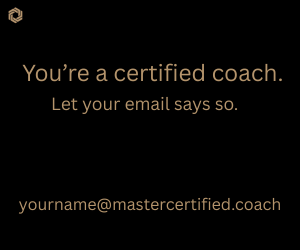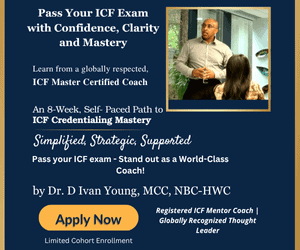Coaching equips teams and organizations to navigate today’s changes by transforming challenges into springboards for growth. The future of coaching highlights three key elements — disruption, innovation, and well-being — to help leaders tackle uncertainty, spark fresh thinking, and foster a sustainable, people-centric culture.
Strategies for Leadership Coaching
Below are practical strategies for weaving these priorities into your coaching practice, so clients can thrive, even amid unexpected shifts.
1. Viewing Disruption as a Strategic Advantage
Disruption often arrives unannounced, forcing organizations to reevaluate established practices and adapt to new realities. Coaches who recognize these moments as catalysts, rather than setbacks, empower teams to develop agility and resilience.
Encourage Rapid Experimentation
Teams tend to cling to familiar routines when external or internal changes occur. By prompting them to run small-scale pilots or “minimum viable experiments,” you nurture a culture of quick learning and adaptation.
Practical Tip: In coaching sessions, challenge clients to devise two or three potential responses to a recent disruptive event. Even if the first option doesn’t succeed, the process fosters a nimble mindset that reduces fear of failure.
Reframe Challenges as Catalysts
Disruptive events can reveal inefficiencies or missed opportunities. Coaches help teams view these moments as opportunities to modernize workflows, adopt new tools, or reassign roles to better align with organizational goals.
Relevant Research: In their classic Harvard Business Review article, “Disruptive Technologies: Catching the Wave,” Bower and Christensen (1995) explain how recognizing disruptive forces early can spark beneficial transformation.
Foster Psychological Safety
Studies show that open communication is crucial in fast-changing environments. Amy Edmondson (2012) noted in Harvard Business Review that teams with a “speak-up” culture adapt more effectively to unexpected challenges. Coaches who promote respectful feedback channels enable teams to share bold ideas and confront uncertainty head-on.
Action Step: Invite leaders to schedule “creative chaos” sessions, where team members propose radical solutions or ask “what if” questions about existing processes. Emphasize the goal of exploration rather than immediate feasibility.
2. Nurturing Innovation for Sustained Growth
Innovation goes beyond technology or trendy buzzwords. It’s a mindset of continuous improvement, experimentation, and collaboration that accelerates meaningful change.
Break Down Silos
Cross-functional collaboration reveals insights no single department can achieve alone. Coaches encourage leaders to mix departmental expertise, expose teams to diverse viewpoints, and spark fresh ideas.
Facilitation Tip: Suggest rotating “innovation champions” — individuals responsible for gathering ideas from their department and sharing them in cross-team forums.
Establish an “Innovation Sandbox”
Give teams a protected space to experiment with new approaches without fear of punitive consequences. By defining clear objectives, timelines, and success metrics, coaches help transform wild ideas into tangible pilot projects.
Why It Matters: Hitt, Holmes, and Mistry (2023) emphasize that in unpredictable environments, structured innovation mechanisms — paired with agile leadership — enhance a team’s ability to respond dynamically and sustain performance in the face of disruption.
Encourage Creative Confidence
Fear of failure often stifles innovative thinking. Coaches can normalize the idea that some initiatives will inevitably fail, but each setback reveals insights that guide future success. Reinforcing this mindset helps leaders and teams take calculated risks that drive progress.
Action Step: Recommend a monthly “innovation lab” where various departments share ongoing experiments. Facilitate open reflection on lessons learned, obstacles encountered, and any synergies that might unify team efforts.
3. Focusing on Well-Being for Sustainable Performance
Burnout remains a pressing issue that erodes motivation and productivity. Integrating well-being into every coaching conversation ensures that performance gains endure over time.
Champion Whole-Person Health
According to Harvard Business Review contributor Jennifer Moss (2021), burnout is often a systemic problem rather than an individual failure. Coaches can help leaders implement healthy boundaries, flexible working arrangements, or wellness programs that recognize employees as complete people rather than solely productivity units.
Notable Statistic: Gallup (2020) reports that burnout costs employers billions of dollars annually in absenteeism, low engagement, and turnover.
Practice Mindfulness and Emotional Intelligence
Self-aware leaders handle conflict more constructively and foster a supportive team culture. Simple mindfulness activities, such as group breathing exercises or short gratitude moments, improve emotional regulation, and boost collaboration and morale.
Coaching Insight: Leaders who model these behaviors encourage team members to prioritize emotional intelligence and mutual respect.
Spot Burnout Indicators Early
Listen for language that signals fatigue, negativity, or feeling overwhelmed. Coaches can recommend strategies like workload adjustments, flexible schedules, or mental health resources before stress escalates.
Preventive Approach: Encourage regular one-on-one check-ins so leaders can promptly identify and address signs of burnout.
Action Step: Begin team sessions with a quick “energy check,” asking participants to share their stress or engagement levels. If recurring issues arise, collaborate with leaders to adjust responsibilities, clarify priorities, or bring in additional support.
4. Shaping the Future: Your Influence as a Coach
Coaches are pivotal in guiding teams and leaders through disruption, championing innovation, and preserving well-being. Integrating these elements into your practice, you help organizations thrive in any environment.
Stay Current with Emerging Studies
The 2023 ICF Global Coaching Study reveals evolving trends in digital platforms and shifting client expectations. Regularly consulting such research ensures your coaching aligns with modern needs.
Embody the Values You Teach
Ongoing learning, balanced work habits, and self-reflection will enhance your coaching practice. Clients often mirror your example. They’ll recognize their importance if you treat disruption and well-being as pillars of your professional life.
Lead by Example
Demonstrate empathy, embrace honest feedback, and maintain healthy boundaries. Setting the tone in your practice builds credibility and inspires leaders to cultivate similarly supportive environments.
Action Step: Conduct a quarterly “practice audit.” Assess whether your current methods effectively incorporate disruption, innovation, and well-being. Pinpoint one area to refine or expand and outline specific steps to address it.
The future of coaching rests on seeing disruption as a launching pad rather than a barrier, nurturing innovation as an ongoing process, and placing well-being at the heart of team performance. Coaches who weave these elements into leadership development champion agility, foster creativity, and preserve a healthy, motivated workforce.
Encourage your clients to interpret challenges as prompts for exploration and learning. Guide them to brainstorm beyond departmental silos regularly and to ensure everyone feels psychologically safe sharing big, unconventional ideas. Emphasize shared responsibility for well-being, from thoughtful workload distribution to open-ended mental and emotional health support. By following these principles, you do more than adapt to the demands of the present — you help shape a future defined by resilience, inventive thinking, and a deep respect for the people who make organizational success possible.
Disclaimer
The views and opinions expressed in guest posts featured on this blog are those of the author and do not necessarily reflect the opinions and views of the International Coach Federation (ICF). The publication of a guest post on the ICF Blog does not equate to an ICF endorsement or guarantee of the products or services provided by the author.
Additionally, for the purpose of full disclosure and as a disclaimer of liability, this content was possibly generated using the assistance of an AI program. Its contents, either in whole or in part, have been reviewed and revised by a human. Nevertheless, the reader/user is responsible for verifying the information presented and should not rely upon this article or post as providing any specific professional advice or counsel. Its contents are provided “as is,” and ICF makes no representations or warranties as to its accuracy or completeness and to the fullest extent permitted by applicable law specifically disclaims any and all liability for any damages or injuries resulting from use of or reliance thereupon.
Authors
Post Type
Blog
Audience Type
HR & Organizational Leaders, Internal Coaches, Managers/Leaders Using Coaching Skills, Team and Group Coaches
Topic
Coaching Skills for Leaders, Coaching in Organizations
Related Posts
From Check-the-Box to Culture Shift: Becoming a Sustainable Coaching Culture
There’s a quiet revolution happening inside organizations — and it doesn’t roar. It listens. It…
Cultivating Coaching Cultures That Shape Individual Contributors Into Leaders
In my coaching work with organizations, I continue to see a recurring…
Measuring Coaching ROI and the Ripple Effect
A Moment of Realization: When Coaching ROI Becomes Visible “I never envisioned…








